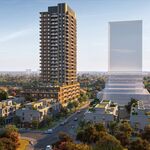vz64
Active Member
Attended the EglintonTOday Complete Street Project public meeting on Wed. Nothing new was said, just the same Metrolinx slide deck that we all know about. The audience was very typical NIMBY crowd; the majority of questions were related to the number of lanes and the number of parking spots. A couple of positive comments from people who live, drive, and cycle in the area and questions about safety of bike lanes (no, no plans for protective intersections). These voices were flooded by "concerned citizens of Eglinton" who did not want any bike lanes (let them ride on small streets), wanted four car lanes and lots of parking. I wanted to reply to these voices, but could not get my turn as there were too many callers.. At least I texted my replies:
- The crossing of highway ramps and bike lanes can co-exist quite well, look at Danforth & QEW and Dundas & QEW: both crossings are quite safe for cyclist to cross.
- Where will all these people park their cars? Why not to walk, cycle, or take LRT?? I used to live on Ava Rd (2013-2019) and I never used my car to reach local businesses.
- Adding lanes only adds to congestions, look at 401. Check traffic literature on the notion of induced demands.
- Finally, the idea of using sidestreets for cycling is preposterous for any long bike trip, there is no direct way to cross the city around the area: you need to go either way south to Bloor or way north to ... Finch Hydro corridor trail.




